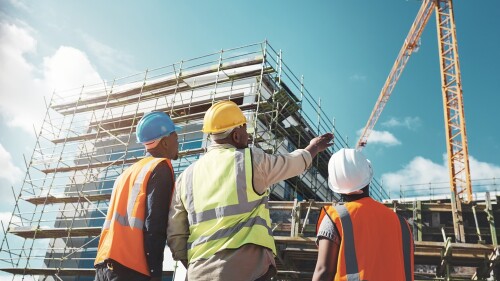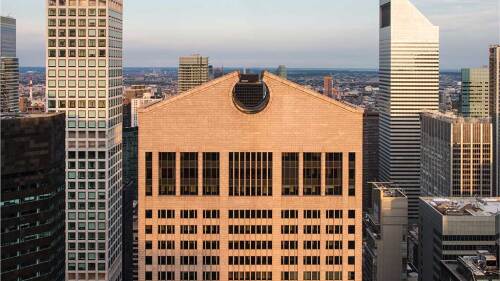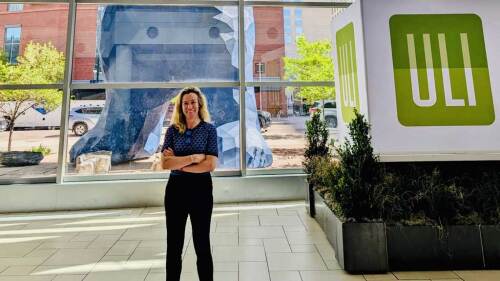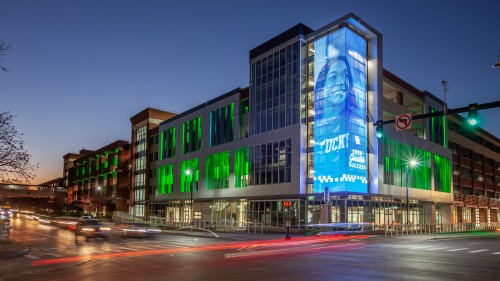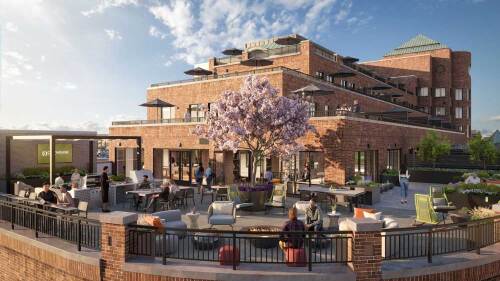Topics
Capital Markets and Finance
The Opportunity Zone program, a national model to spur private investment of housing in underserved areas, has been extended by Congress beyond 2026, marking a significant opportunity for real estate professionals. This innovative initiative not only helps rebuild communities but is a win-win for residents, property developers, and investors. The program’s success in transforming economically distressed areas has proven its value, making it crucial for industry leaders to continue supporting it.
Oracle’s stock recently surged 36 percent in a single day after the announcement of a new deal with OpenAI—a spike that generated an extra $244 billion in market cap for the company. The move fueled increased speculation about a potential AI bubble brewing. Such high-flying stock prices recall the dot-com bubble, when the NASDAQ stock index lost more than 70 percent of its value, dropping from a high of 5,048 in March 2000 to a low of 1,139 in October 2002.
Despite a still tepid transaction market, commercial and multifamily mortgage loan originations increased in the second quarter—up 66 percent compared to a year ago, and up 48 percent from the first quarter of 2025, according to the Mortgage Bankers Association. But what is the outlook for access to debt and equity capital in the second half of the year? Apart from interest rates, where are the biggest pain points in the market for commercial real estate financing?
Design & Planning
In cities large and small around the world—from Columbus, Ohio, to Valencia, Spain—a major focus of modern urban revitalization has been the addition of new sports arenas, purposely built in concert with supportive, mixed-use developments that can become self-sustaining neighborhoods.
In April 2025, ULI San Francisco announced a global call to “reimagine” San Francisco’s famed Market Street, soliciting ideas grounded in ecology, economy, and equality. The goal is to turn the often drab, blighted strip into a series of vibrant, interconnected communities.
Designed by noted architects Philip Johnson and John Burgee and constructed in 1984, 550 Madison Avenue has a curved roof pediment that reminded enough people of Chippendale furniture to earn the nickname “the Chippendale Building.” Globally recognized as an influential postmodern masterpiece, it once served as headquarters for AT&T and later Sony, then became the youngest edifice to be designated a New York City landmark. The Olayan Group purchased it in 2016 to rework the single-tenant tower into a multi-tenant, mixed-use office building that prioritizes occupant wellness and environmental sustainability.
Development and Construction
If California Governor Jerry Brown’s proposal to dissolve all community redevelopment agencies by this July takes effect, virtually all redevelopment activity will be immediately suspended, except for discharge or payment of existing obligations. Read about the political and public policy response, and why the California Redevelopment Association believes the proposal is unconstitutional.
For over a century, American suburbs have been growing inexorably outward from central cities. Following World War II, this growth accelerated to the point where metropolitan regions in the United States now can have a 50- to 60-mile (80- to 96-km) radius. This ever-widening spread of suburbia seems to have continued through the past decade, if 2010 Census data serve as any indication. This, however, is not the whole story, and a closer look at facts on the ground suggest that the growth of the suburbs—now stalled by the housing bust—may in fact be winding down. If true, this would be a major and arguably a very beneficial shift in American urban development.
Since the nation is experiencing a “jobless recovery,” new office development is stagnant to nonexistent in most U.S. markets, conclude panelists at ULI’s Spring Council Forum. They agree that success in the office market will be measured submarket by submarket, and that for the immediate future, office development will mainly involve reusing and repositioning existing assets.
Resilience and Sustainability
As the race to net-zero emissions intensifies, one question looms: how to pay for it? According to the International Monetary Fund (IMF), global investment in climate solutions needs to jump from $900 billion in 2020 to a staggering $5 trillion annually by 2030. The real estate sector alone faces a $1.7 trillion-per-year price tag to decarbonize buildings and infrastructure to achieve net zero.
The Trump Administration is proposing further budget cuts to the National Oceanic and Atmospheric Administration (NOAA) for fiscal year 2026, which begins October 1. The agency, a branch of the U.S. Commerce Department, lost about 30 percent of its funding in 2025, and it is set to spend 14 percent less for climate research than Congress mandated. Real estate professionals often rely on NOAA data to make informed investment decisions, and the possible impact of the budget cuts could be significant for the industry.
Formerly at U.S. Department of Energy, Witteman discusses her mission to integrate sustainability and affordability in commercial real estate, revealing how ULI is leading the charge for decarbonized communities.
Issues and Trends
What if you were told that a brand-new, state-of-the-art building constructed today could be functionally obsolete in less than a decade? This prediction isn’t far-fetched; it’s the emerging reality in a world where technology and user expectations are evolving at a breakneck pace. And nowhere is it more apparent than in the world of parking.
Texas has experienced a prolonged economic boom, bringing with it a significant explosion in population. From 2000 to 2023, the state’s population grew by a remarkable 46.3 percent. This level of growth inevitably places pressure on cities, whether to update infrastructure, revise planning regulations, or address other critical urban challenges.
Currently, vacancy rates in the Washington, D.C. area are around 20 percent, in line with the national average. The nationwide housing shortage, meanwhile, has hit a record high of 4.7 million homes, despite a five-year uptrend in new construction. The deficit is particularly pronounced in highly desirable urban and inner-suburban locations such as Alexandria, Virginia.



